Great Books of the World
Comedy & Humor
A collection of works of humorous or amusing nature, including playful works as well as satire.
38 titles sorted by popularity
-
 Adventures of Huckleberry Finn
Mark Twain
Adventures of Huckleberry Finn
Mark Twain
Adventures of Huckleberry Finn is a novel by Mark Twain, first published in England in December 1884 and in the United States in February 1885. Commonly named among the Great American Novels, the work is among the first in major American literature to be written throughout in vernacular English, characterized by local color regionalism. It is told in the first person by Huckleberry "Huck" Finn, a friend of Tom Sawyer and narrator of two other Twain novels . It is a direct sequel to The Adventures of Tom Sawyer.
-
 Emma
Jane Austen
Emma
Jane Austen
Emma, by Jane Austen, is a novel about youthful hubris and the perils of misconstrued romance. The novel was first published in December 1815. As in her other novels, Austen explores the concerns and difficulties of genteel women living in Georgian-Regency England; she also creates a lively comedy of manners among her characters.
-
 The Importance of Being Earnest
Oscar Wilde
The Importance of Being Earnest
Oscar Wilde
The Importance of Being Earnest, A Trivial Comedy for Serious People is a play by Oscar Wilde. First performed on 14 February 1895 at the St James's Theatre in London, it is a farcical comedy in which the protagonists maintain fictitious personæ in order to escape burdensome social obligations. Working within the social conventions of late Victorian London, the play's major themes are the triviality with which it treats institutions as serious as marriage, and the resulting satire of Victorian ways. Contemporary reviews all praised the play's humour, though some were cautious about its explicit lack of social messages, while others foresaw the modern consensus that it was the culmination of Wilde's artistic career so far. Its high farce and witty dialogue have helped make The Importance of Being Earnest Wilde's most enduringly popular play.
-
 A Midsummer Night's Dream
William Shakespeare
A Midsummer Night's Dream
William Shakespeare
A Midsummer Night's Dream is a play by William Shakespeare. It is believed that it was written between 1590 and 1596. It portrays the events surrounding the marriage of the Duke of Athens, Theseus, and Hippolyta. These include the adventures of four young Athenian lovers and a group of six amateur actors, who are controlled and manipulated by the fairies who inhabit the forest in which most of the play is set. The play, which is categorized as a comedy, is one of Shakespeare's most popular works for the stage and is widely performed across the world.
-
 The Adventures of Tom Sawyer
Mark Twain
The Adventures of Tom Sawyer
Mark Twain
The Adventures of Tom Sawyer by Mark Twain is an 1876 novel about a young boy growing up along the Mississippi River. The story is set in the fictional town of St. Petersburg, inspired by Hannibal, Missouri, where Twain lived.
-
 The Wind in the Willows
Kenneth Grahame
The Wind in the Willows
Kenneth Grahame
The Wind in the Willows is a classic of children's literature by Kenneth Grahame, first published in 1908. Alternately slow moving and fast paced, it focuses on four anthropomorphised animal characters in a pastoral version of England. The novel is notable for its mixture of mysticism, adventure, morality, and camaraderie and celebrated for its evocation of the nature of the Thames valley.
-
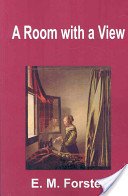 A Room with a View
E. M. Forster
A Room with a View
E. M. Forster
A Room with a View is a 1908 novel by English writer E. M. Forster, about a young woman in the repressed culture of Edwardian era England. Set in Italy and England, the story is both a romance and a critique of English society at the beginning of the 20th century. Merchant-Ivory produced an award-winning film adaptation in 1985.
-
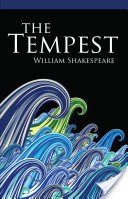 The Tempest
William Shakespeare
The Tempest
William Shakespeare
The Tempest is a play by William Shakespeare, believed to have been written in 1610–11, and thought by many critics to be the last play that Shakespeare wrote alone. It is set on a remote island, where Prospero, the rightful Duke of Milan, plots to restore his daughter Miranda to her rightful place using illusion and skillful manipulation. He conjures up a storm, the eponymous tempest, to lure his usurping brother Antonio and the complicit King Alonso of Naples to the island. There, his machinations bring about the revelation of Antonio's lowly nature, the redemption of the King, and the marriage of Miranda to Alonso's son, Ferdinand.
-
 Pygmalion
Bernard Shaw
Pygmalion
Bernard Shaw
Pygmalion is a play by George Bernard Shaw, named after a Greek mythological character. It was first presented on stage to the public in 1912.
-
 A Modest Proposal
Jonathan Swift
A Modest Proposal
Jonathan Swift
A Modest Proposal for Preventing the Children of Poor People From Being a Burthen to Their Parents or Country, and for Making Them Beneficial to the Publick, commonly referred to as A Modest Proposal, is a Juvenalian satirical essay written and published anonymously by Jonathan Swift in 1729. Swift suggests that the impoverished Irish might ease their economic troubles by selling their children as food for rich gentlemen and ladies. This satirical hyperbole mocks heartless attitudes towards the poor, as well as Irish policy in general.
-
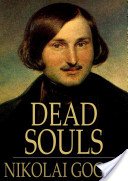 Dead Souls
Nikolai Vasilievich Gogol
Dead Souls
Nikolai Vasilievich Gogol
Dead Souls is a novel by Nikolai Gogol, first published in 1842, and widely regarded as an exemplar of 19th-century Russian literature. The purpose of the novel was to demonstrate the flaws and faults of the Russian mentality and character. Gogol masterfully portrayed those defects through Chichikov and people which he encountered in his endeavours. Those people are typical of then Russian middle-class. Gogol himself saw it as an "epic poem in prose", and within the book as a "novel in verse". Despite supposedly completing the trilogy's second part, Gogol destroyed it shortly before his death. Although the novel ends in mid-sentence , it is usually regarded as complete in the extant form.
-
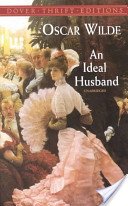 An Ideal Husband
Oscar Wilde
An Ideal Husband
Oscar Wilde
An Ideal Husband is an 1895 comedic stage play by Oscar Wilde which revolves around blackmail and political corruption, and touches on the themes of public and private honour. The action is set in London, in "the present", and takes place over the course of twenty-four hours. "Sooner or later," Wilde notes, "we shall all have to pay for what we do." But he adds that, "No one should be entirely judged by their past." Together with The Importance of Being Earnest, it is often considered Wilde's dramatic masterpiece. After Earnest it is his most popularly produced play.
-
 My Man Jeeves
P. G. Wodehouse
My Man Jeeves
P. G. Wodehouse
My Man Jeeves is a collection of short stories by P. G. Wodehouse, first published in the United Kingdom in May 1919 by George Newnes. Of the eight stories in the collection, half feature the popular characters Jeeves and Bertie Wooster, while the others concern Reggie Pepper, an early prototype for Wooster.
-
 Three Men in a Boat
Jerome K. Jerome
Three Men in a Boat
Jerome K. Jerome
Three Men in a Boat , published in 1889, is a humorous account by English writer Jerome K. Jerome of a boating holiday on the Thames between Kingston and Oxford.
-
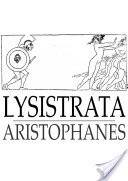 Lysistrata
Aristophanes
Lysistrata
Aristophanes
Lysistrata is a comedy by Aristophanes. Originally performed in classical Athens in 411 BCE, it is a comic account of one woman's extraordinary mission to end The Peloponnesian War. Lysistrata persuades the women of Greece to withhold sexual privileges from their husbands and lovers as a means of forcing the men to negotiate peace — a strategy, however, that inflames the battle between the sexes. The play is notable for being an early exposé of sexual relations in a male-dominated society. The dramatic structure represents a shift away from the conventions of Old Comedy, a trend typical of the author's career. It was produced in the same year as Thesmophoriazusae, another play with a focus on gender-based issues, just two years after Athens' catastrophic defeat in the Sicilian Expedition.
-
 The Devil's Dictionary
Ambrose Bierce
The Devil's Dictionary
Ambrose Bierce
The Devil's Dictionary is a satirical "reference" book written by Ambrose Bierce. The book offers reinterpretations of terms in the English language, lampooning cant and political doublespeak, as well as other aspects of human foolishness and frailty. It was originally published in 1906 as The Cynic's Word Book before being retitled in 1911. Modern "unabridged" versions that include Bierce "definitions" that were for various reasons missed by earlier editions continue to be popular a century later.
-
 Eve's Diary, Complete
Mark Twain
Eve's Diary, Complete
Mark Twain
Eve's Diary is a comic short story by Mark Twain. It was first published in the 1905 Christmas issue of the magazine Harper's Bazaar, and in book format in June 1906 by Harper and Brothers publishing house. It is written in the style of a diary kept by the first woman in the Judeo-Christian creation story, Eve, and is claimed to be "translated from the original MS." The "plot" of this novel is the first-person account of Eve from her creation up to her burial by, her mate, Adam, including meeting and getting to know Adam, and exploring the world around her, Eden. The story then jumps 40 years into the future after the Fall and expulsion from Eden. It is one of a series of books Twain wrote concerning the story of Adam and Eve, including 'Extracts from Adam's Diary,' 'That Day In Eden,' 'Eve Speaks,' 'Adam's Soliloquy,' and the 'Autobiography of Eve.' Eve's Diary has a lighter tone than the others in the series, as Eve has a strong appreciation for beauty and love. The book may have been written as a posthumous love-letter to Mark Twain's wife Olivia Langdon Clemens, or Livy, who died in June 1904, just before the story was written. Mark Twain is quoted as saying, "Eve's Diary is finished — I've been waiting for her to speak, but she doesn't say anything more." The story ends with Adam's speaking at Eve's grave, "Wherever she was, there was Eden."
-
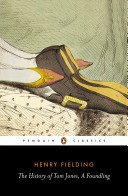 History of Tom Jones, a Foundling
Henry Fielding
History of Tom Jones, a Foundling
Henry Fielding
The History of Tom Jones, a Foundling, often known simply as Tom Jones, is a comic novel by the English playwright and novelist Henry Fielding. The novel is both a Bildungsroman and Picaresque novel. First published on 28 February 1749, Tom Jones is among the earliest English prose works describable as a novel. The novel, totalling 346,747 words, is divided into 18 smaller books, each preceded by a discursive chapter, often on topics totally unrelated to the book itself. It is dedicated to George Lyttleton.
-
 Nonsense Books
Edward Lear
Nonsense Books
Edward Lear
Edward Lear was an English artist, illustrator, author and poet, and is known now mostly for his literary nonsense in poetry and prose and especially his limericks, a form he popularised. His principal areas of work as an artist were threefold: as a draughtsman employed to illustrate birds and animals; making coloured drawings during his journeys, which he reworked later, sometimes as plates for his travel books; as a illustrator of Alfred Tennyson's poems. As an author, he is known principally for his popular nonsense works, which use real and invented English words.
-
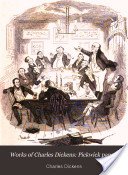 The Pickwick Papers
Charles Dickens
The Pickwick Papers
Charles Dickens
The Posthumous Papers of the Pickwick Club is the first novel by Charles Dickens. He was asked to contribute to the project as an up-and-coming writer following the success of Sketches by Boz, published in 1836 . Dickens increasingly took over the unsuccessful monthly publication after the original illustrator Robert Seymour had committed suicide.
-
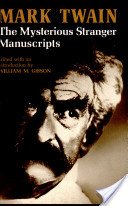 The Mysterious Stranger
Mark Twain
The Mysterious Stranger
Mark Twain
The Mysterious Stranger is the final novel attempted by the American author Mark Twain. He worked on it periodically from 1897 through 1908. The body of work is a serious social commentary by Twain addressing his ideas of the Moral Sense and the "damned human race".
-
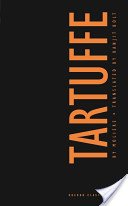 Tartuffe; Or, the Hypocrite
Molière
Tartuffe; Or, the Hypocrite
Molière
Tartuffe, or The Impostor , first performed in 1664, is one of the most famous theatrical comedies by Molière, and the characters of Tartuffe, Elmire, and Valère are considered among the greatest classical theatre roles.
-
 Martin Chuzzlewit
Charles Dickens
Martin Chuzzlewit
Charles Dickens
The Life and Adventures of Martin Chuzzlewit is a novel by Charles Dickens, considered the last of his picaresque novels. It was originally serialised in 1843 and 1844. Dickens thought it to be his best work, but it was one of his least popular novels. Like nearly all of Dickens' novels, Martin Chuzzlewit was released to the public in monthly instalments. Early sales of the monthly parts were disappointing, compared to previous works, so Dickens changed the plot to send the title character to America. This allowed the author to portray the United States satirically as a near wilderness with pockets of civilisation filled with deceptive and self-promoting hucksters.
-
 The Inspector-General
Nikolai Vasilievich Gogol
The Inspector-General
Nikolai Vasilievich Gogol
The Government Inspector, also known as The Inspector General , is a satirical play by the Ukrainian-born Russian dramatist and novelist Nikolai Gogol. Originally published in 1836, the play was revised for an 1842 edition. Based upon an anecdote allegedly recounted to Gogol by Pushkin, the play is a comedy of errors, satirizing human greed, stupidity, and the extensive political corruption of Imperial Russia.
-
 Just William
Richmal Crompton
Just William
Richmal Crompton
Richmal Crompton Lamburn was initially trained as a schoolmistress but later became a popular English writer, famous for her many Just William humorous short stories, and to a lesser extent adult fiction books.
-
 The Middle-Class Gentleman
Molière
The Middle-Class Gentleman
Molière
Classic satire, one of the best by Franceâs greatest comedic playwright, pokes fun at the sham and hypocrisy of 17th-century French society. A wealthy tradesman, Monsieur Jourdain, yearns to become a gentleman in order to win the hand of a marchionessâdisregarding the inconvenient fact that he is already marriedâbut only succeeds in making a fool of himself.
-
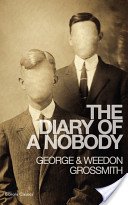 The Diary of a Nobody
George Grossmith
The Diary of a Nobody
George Grossmith
The Diary of a Nobody is an English comic novel written by the brothers George and Weedon Grossmith, with illustrations by the latter. It originated as an intermittent serial in Punch magazine in 1888–89 and first appeared in book form, with extended text and added illustrations, in 1892. The Diary records the daily events in the lives of a London clerk, Charles Pooter, his wife Carrie, his son Lupin, and numerous friends and acquaintances over a period of 15 months.
-
 The Miser
Molière
The Miser
Molière
L'Avare is a 1668 five-act satirical comedy by French playwright Moli©·re. Its title is usually translated as The Miser when the play is performed in Engli
-
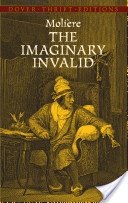 The Imaginary Invalid
Molière
The Imaginary Invalid
Molière
Tartuffe, or The Impostor , first performed in 1664, is one of the most famous theatrical comedies by Molière, and the characters of Tartuffe, Elmire, and Valère are considered among the greatest classical theatre roles.
-
 Herland
Charlotte Perkins Gilman
Herland
Charlotte Perkins Gilman
Herland is a utopian novel from 1915, written by feminist Charlotte Perkins Gilman. The book describes an isolated society composed entirely of women, who reproduce via parthenogenesis . The result is an ideal social order: free of war, conflict, and domination. It first appeared as a serial in Forerunner, a magazine edited and written by Gilman between 1909 and 1916. The book is the middle volume in her utopian trilogy; it was preceded by Moving the Mountain , and followed with a sequel, With Her in Ourland . It was not published in book form until 1979.
-
 A Tramp Abroad
Mark Twain
A Tramp Abroad
Mark Twain
A Tramp Abroad is a work of travel literature, including a mixture of autobiography and fictional events, by American author Mark Twain, published in 1880. The book details a journey by the author, with his friend Harris , through central and southern Europe. While the stated goal of the journey is to walk most of the way, the men find themselves using other forms of transport as they traverse the continent. The book is the third of Mark Twain's five travel books and is often thought to be an unofficial sequel to the first one, The Innocents Abroad.
-
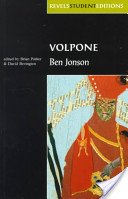 Volpone; Or, The Fox
Ben Jonson
Volpone; Or, The Fox
Ben Jonson
Volpone is a comedy by Ben Jonson first produced in 1606, drawing on elements of city comedy, black comedy and beast fable. A merciless satire of greed and lust, it remains Jonson's most-performed play, and it is among the finest Jacobean Era comedies.
-
 The Adventures of Sally
P. G. Wodehouse
The Adventures of Sally
P. G. Wodehouse
The Adventures of Sally is a novel by P. G. Wodehouse. It appeared as a serial in Collier's Weekly magazine in the United States from 8 October to 31 December 1921, and in the Grand Magazine in the United Kingdom from April to July 1922. It was first published as a book in the UK by Herbert Jenkins, London, on October 17, 1922, and in the US by George H. Doran, New York, on March 23, 1923, under the title Mostly Sally. It was serialised again, under this second title, in The Household Magazine from November 1925 to April 1926.
-
 Love Among the Chickens
P. G. Wodehouse
Love Among the Chickens
P. G. Wodehouse
Love Among the Chickens is a novel by P. G. Wodehouse, first published as a book in the United Kingdom in June 1906 by George Newnes, London, and in the United States by Circle Publishing, New York, on 11 May 1909, having already appeared there as a serial in Circle magazine between September 1908 and March 1909. The English edition was dedicated "to Sir Bargrave and Lady Deane"; the Rt Hon Sir Henry Bargrave Deane QC was a High Court judge and a cousin of Wodehouse's mother.
-
 The Man with Two Left Feet, and Other Stories
P. G. Wodehouse
The Man with Two Left Feet, and Other Stories
P. G. Wodehouse
The Man With Two Left Feet, and Other Stories is a collection of short stories by P. G. Wodehouse, first published in the United Kingdom on March 8, 1917 by Methuen & Co., London, and in the United States on 1 February 1933 by A.L. Burt and Co., New York. All the stories had previously appeared in periodicals, usually the Strand in the U.K. and the Red Book magazine or the Saturday Evening Post in the U.S.
-
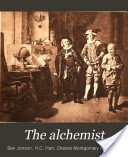 The Alchemist
Ben Jonson
The Alchemist
Ben Jonson
The Alchemist is a comedy by English playwright Ben Jonson. First performed in 1610 by the King's Men, it is generally considered Jonson's best and most characteristic comedy; Samuel Taylor Coleridge claimed that it had one of the three most perfect plots in literature. The play's clever fulfilment of the classical unities and vivid depiction of human folly have made it one of the few Renaissance plays with a continuing life on stage .
-
 Laughter: An Essay on the Meaning of the Comic
Henri Bergson
Laughter: An Essay on the Meaning of the Comic
Henri Bergson
Laughter is a collection of three essays by French philosopher Henri Bergson, first published in 1900. It was written in French, the original title is Le Rire. Essai sur la signification du comique .
-
 Sartor Resartus: the life and opinions of Herr Teufelsdr
Thomas Carlyle
Sartor Resartus: the life and opinions of Herr Teufelsdr
Thomas Carlyle
Sartor Resartus is an 1836 novel by Thomas Carlyle, first published as a serial in 1833-34 in Fraser's Magazine. The novel purports to be a commentary on the thought and early life of a German philosopher called Diogenes Teufelsdröckh , author of a tome entitled "Clothes: their Origin and Influence", but was actually a poioumenon. Teufelsdröckh's Transcendentalist musings are mulled over by a skeptical English Reviewer who also provides fragmentary biographical material on the philosopher. The work is, in part, a parody of Hegel, and of German Idealism more generally. However, Teufelsdröckh is also a literary device with which Carlyle can express difficult truths.


